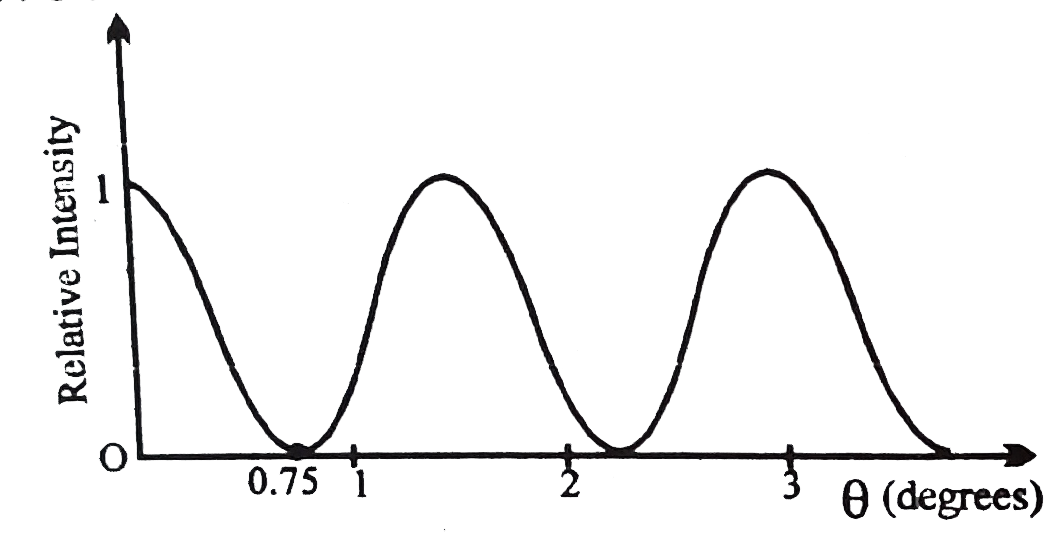_E01_099_Q01.png)
Light of wavelength 520 nm passing through a double slit, produces interference pattern of relative intensity versus deflection angle θ as shown in the figure. Find the separation d between the slits.
For first dark
θ=λ2d⇒0.75×π180=520×10−92d
d=1.98×10−2≈2×10−2mm.
Topper's Solved these Questions
Similar Questions
Light of wavelength 520nm passing through a double slit,produced interference pattern of relative intensity versus deflection angle θ as shown in the figure.find the separation of between the slits.

View SolutionSuppose a monochromatic X-ray beam of wavelength 100 pm is sent through a Young's double slit and the interference pattern is observed on a photographic plate placed 40 cm away from the slit. What should be the separation between the slits so that the successive maxima on the screen are separated by a distance of 0.1 mm?
View SolutionLaser light of wavelength 1260 nm incident on a pair of slits produces an interference pattern in which the fringes are seprated by 8.1mm .A second laser light produces an interference pattern in which the fringes are seprated by 7.2 mm.Calculate the wavelength of the second light
View SolutionLaser light of wavelength 315 nm incident on a pair of slits produces an interference pattern in which the fringes are seprated by 8.1mm .A second laser light produces an interference pattern in which the fringes are seprated by 7.2 mm.Calculate the wavelength of the second light
View SolutionLaser light of wavelength 630 nm incident on a pair of slits produces an interference pattern in which the fringes are seprated by 8.1mm .A second laser light produces an interference pattern in which the fringes are seprated by 7.2 mm .calculate the wavelength of the second light .
View SolutionLaser light of wavelength 630 nm incident on a pair of slits produces an interference pattern in which the fringes are seprated by 8.1mm .A second laser light produces an interference pattern in which the fringes are seprated by 3.6 mm.Calculate the wavelength of the second light
View SolutionLaser light of wavelength 630nm incident on a pair of slits produces an interference pattern where bright fringes are separated by 8.1mm. Another light produces the interference pattern, where the bright fringes are separated by 7.2mm. Calculate the wavelength of second light.
View SolutionLaser light of wave length 600 nm incident on a pair of slits produces an interference pattern in which the bright fringes are separated by 8mm. A second light produces an interference pattern in which the fringes are separated by 12 mm. Calculate the wavelength of the second light.
View SolutionDescribe Young's double slit experiment to produce interference pattern due to a monochromatic source of light. Deduce the expression for the fringe width.
View SolutionIn the Young's double slit experiment, the interference pattern is found to have as intensity ratio between the bright and dark fringes as 9. This implies that
View Solution
